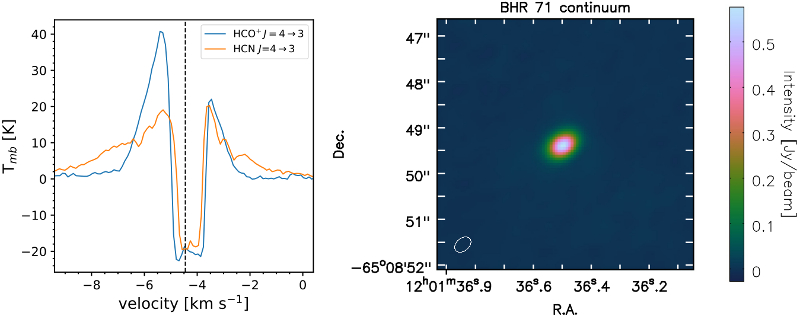| EPoS Contribution |
|
Direct Infall Signatures and Complex Organic Molecules Found Toward Two Isolated Cores, BHR71 and B335
Yao-Lun Yang UT Austin, Austin, US | |
| Stars form via the infall of mass from a core, but direct evidence for such infall has been elusive. Observation of infall signatures will constrain models of star formation. The most direct probe of infall is red-shifted absorption against the central continuum source. ALMA observations of dense gas tracers, HCO+ and HCN, show such redshifted absorption toward two isolated cores, BHR71 and B335. We model the line profiles with 1D and 3D radiative transfer calculations to further constrain the physical properties of the collapsing envelope. In addition to the infall signatures, we detected a number of complex organic molecules in the ALMA spectra of BHR71 and B335. The two sources have luminosities that differ by more than a factor of 10, but are at similar evolutionary stages, adding interest to their dynamical and chemical evolution. | |
 | |
| Caption: Left: The line profiles of HCO+ 4-3 and HCN 4-3 showing red-shifted absorption against the continuum along with blue symmetry profile, which is the direct signature of infall in the envelope. The vertical line indicates the source velocity of -4.45 km/s (Garay et al. 1998). Right: The continuum image of BHR71 at 350 GHz, showing that the continuum source remains point-like with the 0.27" beam of ALMA. | |
| Collaborators: N. Evans, UT Austin, US J. Green, STScI, US J. Jorgensen, STARPLAN, DK T. Bourke, SKA, UK J. Tobin, OU, U Oklahoma, US J. DiFrancesco, NRC, CA |
Key publication
Suggested Session: Cores |

